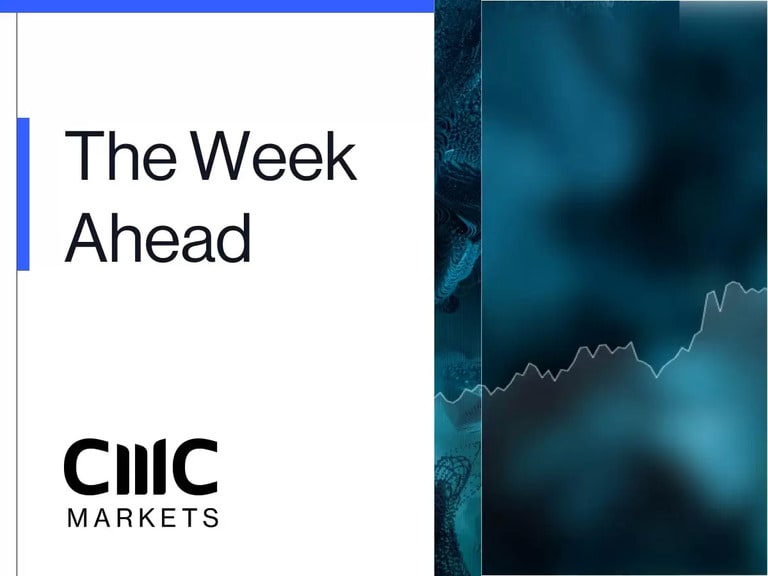With iron ore surging throughout the second half of this year, traders might be thinking 2024 could be a big year for commodities. The stimulus efforts by the Chinese government to bolster infrastructure projects could create a promising outlook for a commodity boom in the coming year. In fact, the macro driver of a rebound in broad commodity markets can be potential downtrends in the US dollar in 2024, which has been hugely bid by the financial markets as the US Federal Reserve may have reached the end of its rate hiking cycle.
Yet, while investors might be buoyed by rising iron ore prices, which are particularly exposed to the Chinese government’s decisions, the outlook for commodities in general is rather muted.
The latest Commodity Prices Outlook from the World Bank suggests there will be a decline in commodity prices over the next two years.
According to the World Bank, the reasoning for their slightly bearish outlook is while there are numerous conflicts playing out around the globe, with war in Ukraine and the latest conflagration in the Middle East at the top of mind, most commodity markets have been surprisingly sanguine.
While the World Bank is predicting minimal disruption to the world’s commodity markets - especially oil - it does hedge its bets and warns that if the current Israel-Gaza situation does escalate into a wider regional war, all bets are basically off.
Against this assumption is the fact a slowing global economy influenced by war could also represent a downside risk for commodities.
Hence, there are mixed messages to be had around the commodities outlook in 2024 driven by geopolitical uncertainty.
Oil and gas may continue to face downside pressure
Due to Middle East tensions, there has been considerable risk premium built into key commodities such as oil and gold. Oil prices could decline throughout 2024 as the global economy slows, notably driven by the Chinese economic slowdown and a record-high US oil production. Whereas gold prices are likely to remain more sensitive to geopolitical tensions as the precious metal is usually seen as a risk-haven asset in a crisis.
Apart from oil, natural gas was one of the most significant forces that has caused a surge in inflation since the Ukraine-Russia War started in Feb 2021. However, 2023 saw natural gas prices a sharp decline due to record production and higher inventories. Demand is cyclical and expected to increase with the northern hemisphere winter, keeping natural gas prices elevated before dropping in mid-2024.
Also putting potential downward pressure on oil and gas prices is the clean energy transition as demand for fossil fuels is likely to further decrease especially as the transport evolution to more electric vehicles (EVs) gathers pace.
According to the International Energy Agency (IEA), oil, natural gas, and coal account for around 80 per cent of energy sources, this has fallen from 87 per cent in 2010. Most fossil fuel players are looking for ways to decarbonise as quickly as possible
The demand for fossil fuels is expected to decline further with governments increasingly taking action to address climate change, which could lead to stricter regulations on the fossil fuels industry.
Critical minerals and industrial metals can be determined by EV demand
When it comes to Australia’s major exports of critical minerals, the upside here is the increasing popularity of EVs will ensure that demand stays elevated for lithium and cobalt which are used in batteries. And this could be further buoyed by the federal government’s recent decision to double critical minerals subsidies to $4 billion.
Electric car markets are seeing exponential growth, a total of 14 per cent of all new cars sold were electric in 2022 according to the IEA and this is likely to increase further, especially with Tesla indicating plans to significantly increase production over the next seven years to 2030.
The supply of critical minerals is limited. Many of the world’s largest reserves are in countries with geopolitical risks. Australia is likely to play a key role as one of the world’s key mineral producers removed from geopolitical tensions.
However, the downside risk remains in China as a ramp-up supply and the weakened domestic demands may continue to drag on the critical mineral prices. The spot price of lithium carbonate tumbled to a two-year low in early November due to the oversupply issue in China. This trend may extend into early 2024 till supply can be balanced, depending on the trajectory of China’s economic recovery.
The demand for EVs may have hit its cyclical peak as a recent CarGurus report indicated that 47% of buyers had no intention of buying an EV as their next car earlier this year. This is not only a negative influence on the critical minerals, but also impacts key industrial metals, particularly copper and aluminium.
Macro plays a key role
Other factors likely to influence commodity markets in 2024 include the global growth outlook and whether central banks, after a lengthy period of belt-tightening, have managed to put the inflation genie back in the bottle. Based on the current economic landscape, central banks may have done their jobs by hiking rates while achieving a soft-landing in their respective economies. This could cause a further softening of USD and lift commodity prices in general.
On the other hand, if inflation remains relatively high or starts to creep up again, interest rates are likely to stay higher for longer, thereby reducing the demand and price of industrial metals, typically copper and iron ore.
Disclaimer: CMC Markets Singapore may provide or make available research analysis or reports prepared or issued by entities within the CMC Markets group of companies, located and regulated under the laws in a foreign jurisdictions, in accordance with regulation 32C of the Financial Advisers Regulations. Where such information is issued or promulgated to a person who is not an accredited investor, expert investor or institutional investor, CMC Markets Singapore accepts legal responsibility for the contents of the analysis or report, to the extent required by law. Recipients of such information who are resident in Singapore may contact CMC Markets Singapore on 1800 559 6000 for any matters arising from or in connection with the information.






